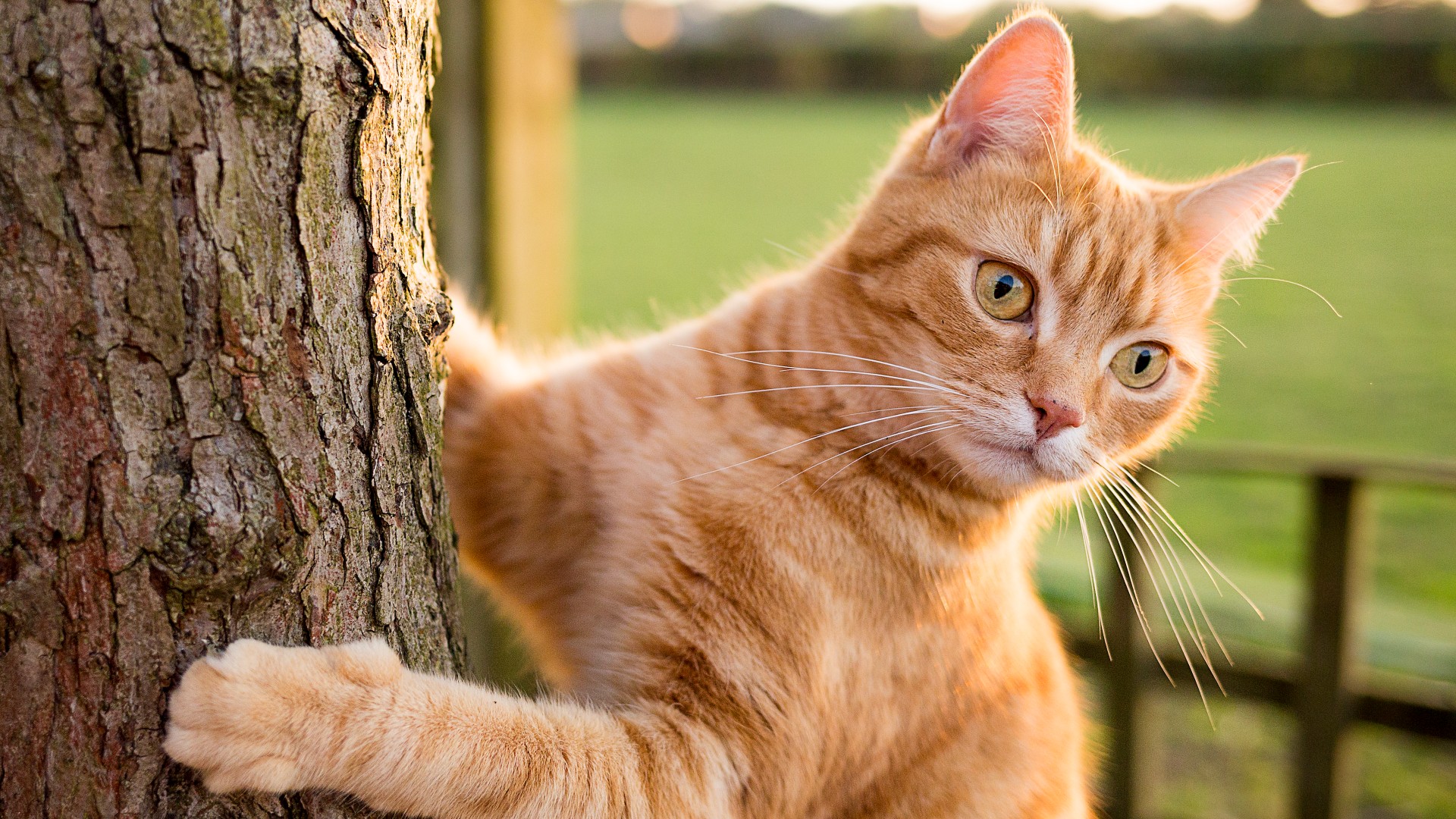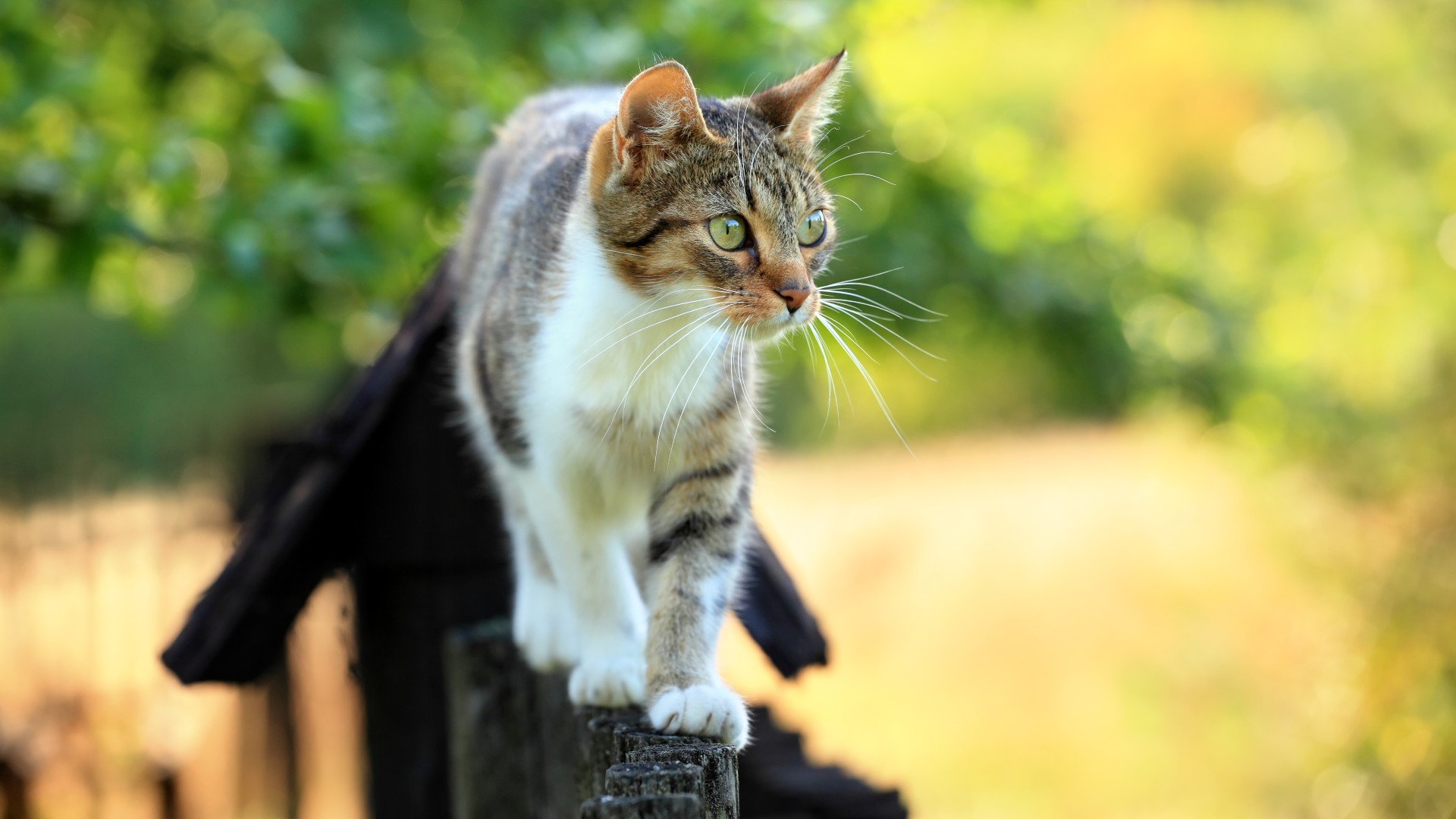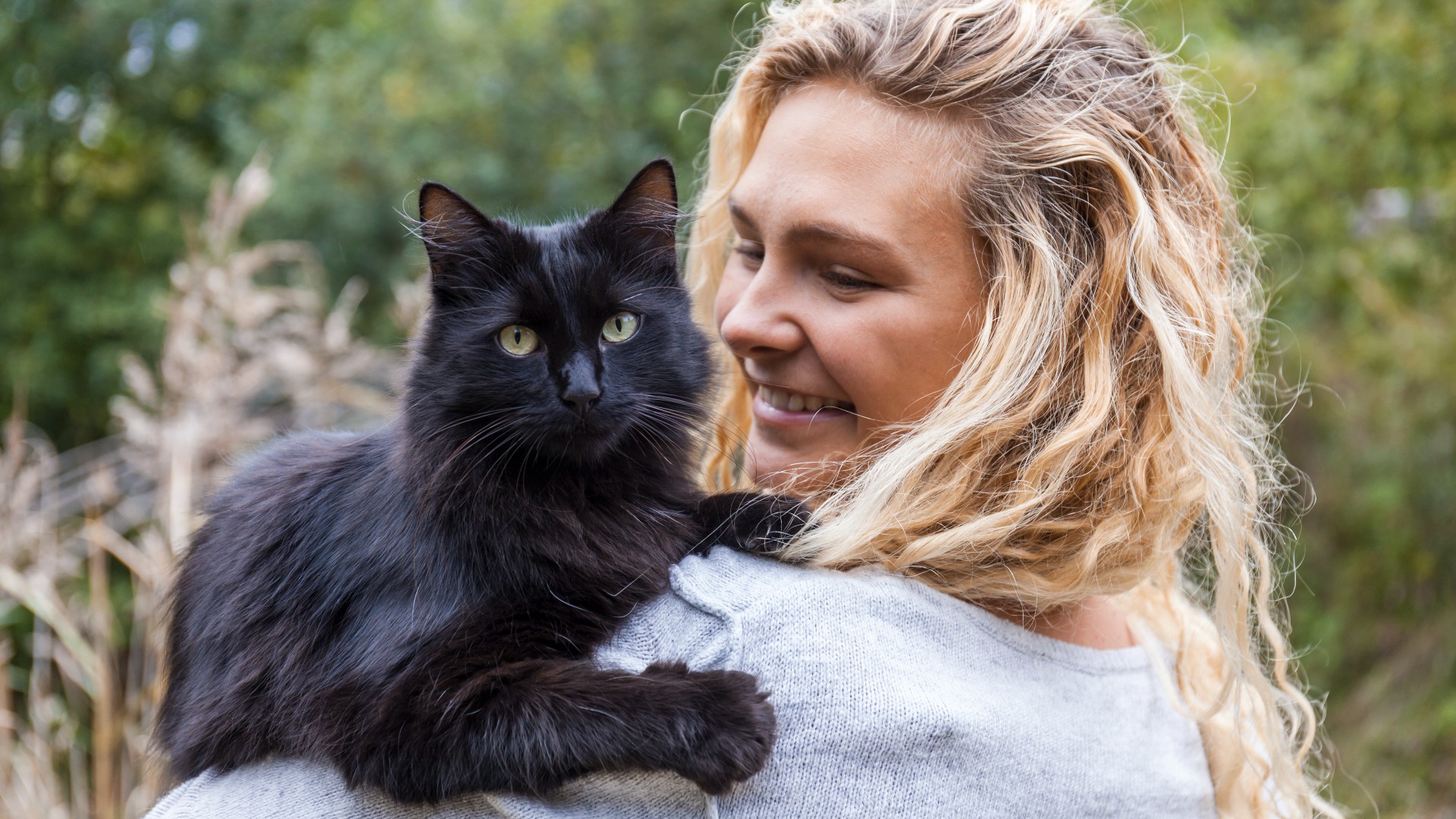How to make the transition from indoor to outdoor cat
Here’s how to make the transition from indoor to outdoor cat as smooth as possible

There are lots of reasons why many owners want to let their cats roam free and enjoy the great outdoors. Allowing cats to follow their natural instincts of hunting and playing provides mental and physical stimulation, plus it saves you from having to clean up the litter box.
However, the threats from road traffic, fleas and ticks, rival cats, predators, and even poisonous plants mean many owners would rather opt for the best cat enclosures instead.
Around 63% of American owners think twice about allowing their cat outdoors because of the hazards we’ve just mentioned but you may have no choice but to let your cat out, or you simply want to offer your independent feline friend the ultimate freedom of going where they choose. Either way, we’ve got expert tips and tricks that will show you how to make the transition from indoor to outdoor cat.
From providing a safe and secure retreat from bad weather or predators to ensuring they’re fully vaccinated and trackable, we’ve got tips on letting your cat roam and guaranteeing they come back to you. Our guide to caring for outdoor cats will also give you peace of mind that you’re doing your utmost to keep them safe while they explore.
Indoor to outdoor cat life expectancy
When it comes to indoor vs. outdoor cats, one of the biggest things you’ll want to consider when transitioning your feline friend from their indoor environment to an outdoor one is the potential reduction in their life expectancy.
It’s a sad fact that while being outdoors will certainly allow your kitty far more opportunities to exercise and tap into their natural hunting instincts, it could also shave years off their life.
Indoor cats live much more sheltered lives, so they can easily reach the ripe old age of 15 if they are well cared for and don’t suffer from any health issues. Outdoor cats, on the other hand, are exposed to a number of risks, such as traffic, diseases, and other animals, that can lower their life expectancy to as little as two to five years.
Things to do before letting your cat outside

One of the most important parts of ensuring a smooth transition from an indoor lifestyle to an outdoor one is the preparation you do beforehand. Although outdoor cats tend to have a far lower life expectancy overall than indoor cats, there are some safety precautions you can take to help reduce the risks and bring you peace of mind.
1. Ensure your cat’s vaccinations are up-to-date
Cat and kitten vaccinations are a vital part of ensuring the health and wellbeing of your feline friend, and especially important if your little one is going to be spending a large chunk of their life outdoors. We recommend you speak with your vet about what vaccinations your cat has already had and which ones are due for a booster.
And if you’re wondering ‘does pet insurance cover vaccines?’ the answer to this for standard policies is generally no. However, if you have a wellness plan attached to your policy, this may well cover the cost of the vaccinations your cat needs.
Regardless of this, while we understand that vaccinations are an expense you could probably do without, when it comes to an outdoor cat, they are vital for protecting against a wide range of potentially life-threatening illnesses.
2. Invest in a pet tracker
You might be wondering can cats find their way home. The best pet trackers give you a convenient way to keep tabs on your pet 24/7, offering you peace of mind that you always know where they are and how to reach them if you want to bring them home again. These nifty little devices are lightweight, fit comfortably around the neck, are waterproof, and provide you with up-to-the-minute location data.
3. Apply a good quality flea treatment
Now more than ever, you’ll want to make sure that your kitty is protected against harmful fleas and ticks. The best flea treatments for cats offer a range of convenient options, but by far the most effective are topical flea treatments and flea collars.
When it comes to choosing between the two, it largely comes down to budget and how often you want to be treating your kitty. Topical flea treatments for cats tend to be a popular option as they both treat existing outbreaks and prevent fleas from returning. However, they are expensive and must be reapplied every 30 days.
On the other hand, flea collars for cats offer up to eight months of protection and tend to be affordable, offering pet parents both affordability and convenience. Unlike topicals, they can only prevent fleas, they can’t treat existing outbreaks, so if your cat currently has fleas, you’ll want to pair the collar with a tablet or topical at first until they’re parasite-free.
4. Have your cat microchipped
A final tip before you begin the process of transitioning your indoor cat to the outdoors is to have them microchipped. These small electronic devices are placed under the skin and hold a unique number that will enable any vet to pull up your details and return your cat to you should they be found by a good samaritan.
Another bonus to having your cat microchipped is that if you purchase the best microchip cat flap, your kitty will still be able to access the house if they want to pop in or are in need of shelter. Unlike a regular cat flap, it ensures you won’t also be visited by all the other friendly felines in your neighborhood. Before you buy one, you might want to read about how microchip cat flaps work.
Four steps to transition from indoor to outdoor cat

When it comes to transitioning your cat from your home to the great outdoors, there are several things you can do to help ensure things run as smoothly as possible.
1. Begin with supervised access
If your cat has spent their life inside up to this point, it’s not a case of simply opening your door and letting them run freely into nature’s backyard. Your feline friend will need time to get used to the sights, sounds, and smells of their new environment.
We recommend you begin by using one of the best cat harnesses, as this will allow you to keep a firm grip on your kitty while they explore and will prevent them from becoming so overwhelmed that they run off. To start with, keep them to a confined area and stick to 10 minutes at a time.
2. Let them out just before meal time
When you’re ready to let your cat go outside unsupervised, a great thing to do in the beginning is to send them out just before they’re due to be fed. Cats are highly motivated by food and it’s likely they will come back quick-smart when you call their name.
Doing things this way to start with means that your feline friend gets to spend some time outdoors unsupervised but you have peace of mind that you can get them back quickly if you need to. This allows for a nice, slow transition for both of you.
3. Pick safe times
By safe times, we mean avoid letting your cat out when there are loud noises that might spook them, such as thunder or fireworks, or if the weather is particularly wet or cold. As they eventually get used to the sights and sounds of the outdoors, these things may not bother your cat so much, but at the start, it’s best to avoid any potential triggers that might spook them.
4. Gradually increase their outdoor time
We recommend that you pace things slowly over the first few weeks and stick to short bursts of time outdoors during the quietest periods of the day. You’ll begin to sense whether your cat enjoys being outside and how easy it is to get them to come home when you call them. From there, you can judge how often you let them out and for how long.
If you decide to make the transition, you might want to learn how to install a pet door. There are plenty of cat door alternatives if you need a damage-free option. Want to provide a safe and secure retreat for your moggy? Our DIY outdoor cat house ideas are fun and functional without breaking the bank.
PetsRadar Newsletter
Get the best advice, tips and top tech for your beloved Pets

Kathryn is a freelance writer who has been a member of the PetsRadar family since it launched in 2020. Highly experienced in her field, she's driven by a desire to provide pet parents with accurate, timely, and informative content that enables them to provide their fur friends with everything they need to thrive. Kathryn works closely with vets and trainers to ensure all articles offer the most up-to-date information across a range of pet-related fields, from insights into health and behavior issues to tips on products and training. When she’s not busy crafting the perfect sentence for her features, buying guides and news pieces, she can be found hanging out with her family (which includes one super sassy cat), drinking copious amounts of Jasmine tea and reading all the books.
